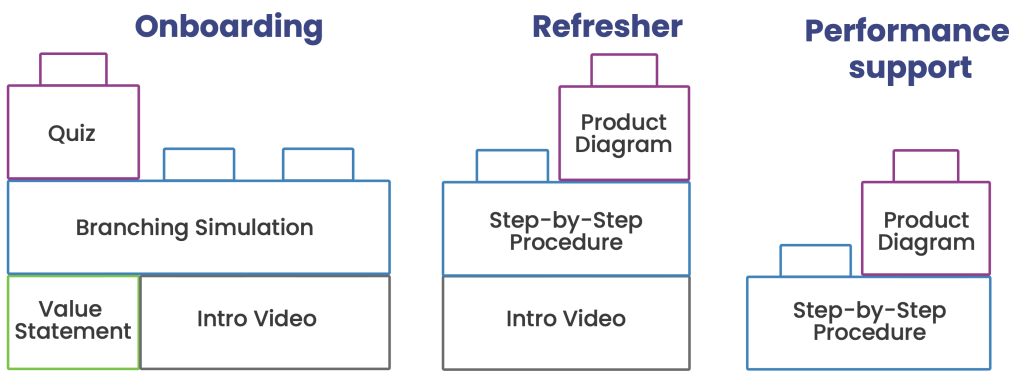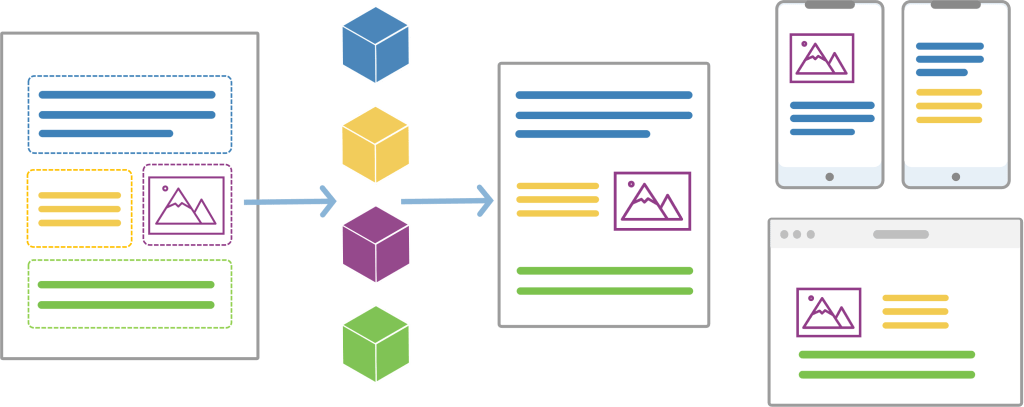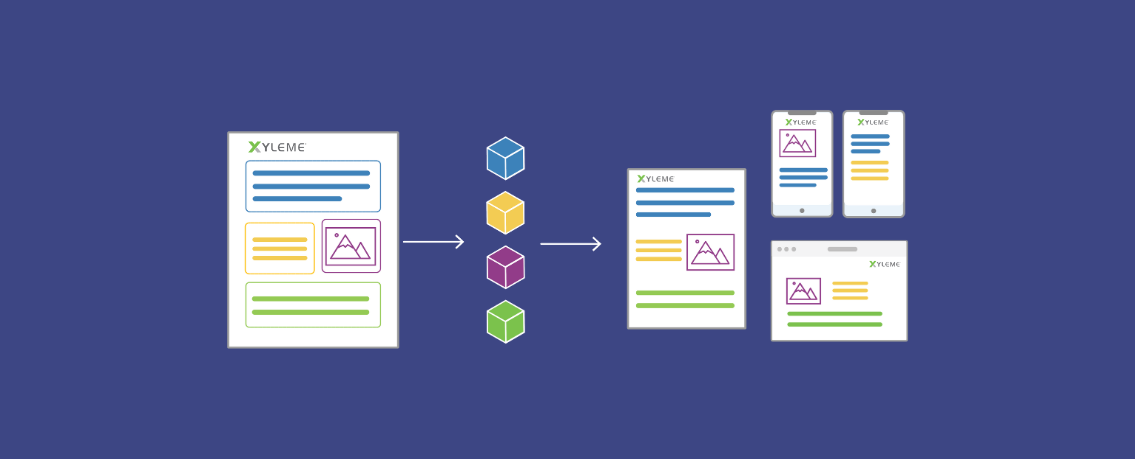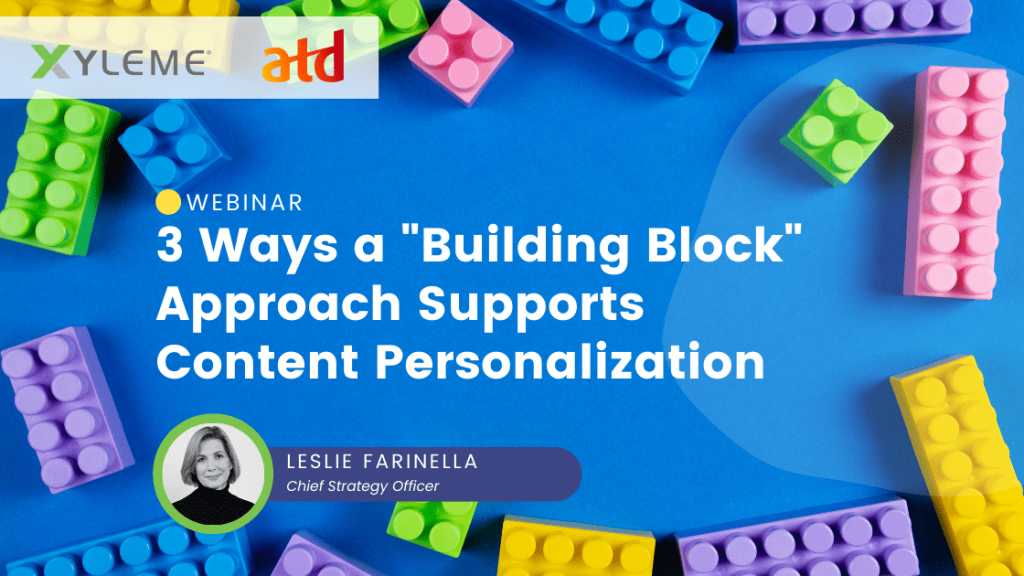In today’s business landscape, efficiency is crucial for managing content. Enter reusable content, a game-changing method for enterprise content management. By breaking content into reusable building blocks, companies create an agile and scalable system for delivering information and training to employees. Let’s explore the benefits of this method and how it transforms content strategy in the enterprise.
The Rising Challenge of Managing Multiple Content Sources
Enter the building block method – a solution that is revolutionizing the way organizations approach content strategy. By breaking down content into smaller, reusable content components, learning and development teams can create a centralized content repository that allows for more efficient content creation, maintenance, and delivery.

With the building block method, content authors have the ability to create individual content components – such as modules, lessons, or assessments – that can be used and reused across multiple training programs or courses. This eliminates the need to recreate the same content for different purposes, saving time and resources.
Additionally, the building block method enables learning and development teams to easily update content when necessary. Instead of combing through multiple documents to identify where changes need to be made, authors can simply update the relevant building blocks, and the changes will be reflected across all instances where those building blocks are used.

Understanding the Building Block Method: A Solution for Content Strategy
This is especially beneficial when it comes to creating training materials, product user guides, customer support documentation, or company policies. With reusable building blocks, organizations can easily adapt content to different contexts without having to start from scratch.
Watch the webinar, 3 Ways a “Building Block” Approach Supports Content Personalization at Scale and explore why content is the key to any personalization strategy and how taking a component-centric building block approach and implementing the right technology tools allow organizations to effectively personalize content, even on a global scale..
Breaking content down into components enables learning and development teams to easily update content when necessary. Instead of combing through multiple documents to identify where changes need to be made, authors can simply update the relevant building blocks, and the changes will be reflected across all instances where those building blocks are used. This ensures that content is consistently up to date, eliminating any confusion or discrepancies that can arise from outdated information.
Leveraging Reusable Content to Track Usage and Measure Effectiveness
Case Studies: Successful Implementation of The Building Block Method
Let’s dive into some real-world case studies to see how organizations have successfully implemented the building block method in their content strategy. These examples will give you valuable insights into the practical application of this transformative approach and inspire you to implement it in your own learning and development team.
Case Study #1: How Allina Health Cut Content Development Time by 66% with an Agile Reuse & Personalization Strategy
“Everyone creating the content is on our team and is using Xyleme, so we’ve been able to be systematic about content for the entire system, being able to reuse unique pieces across different sites, learning solutions and experiences — web projects, microlearning, reference guides, procedures, etc. We can now say to a Subject Matter Expert (SME) at one hospital, ‘We already have content on this topic that was created for another customer,’ and save them a lot of time and frustration recreating content over and over again.”
ID Supervisor Sarah Karel
“I estimate we have cut content development time by 66% simply by being able to easily reuse what’s already been created.”
Deborah Hardison Allina Health Instructional Design Manager
Case Study #2: Rogers Communications Reduces Content Development Costs by 53% with Xyleme CCMS
"This investment has supported our department’s commitment to reduce operating costs, while also aligning with key elements of our learning strategy focused on building more interactive and engaging experiences for learners across Rogers."
Liz Matthews, Senior Director of Learning Innovation & Business Solutions
“This process is very agile and time efficient since I can build the course and test components at the same time as [a colleague] is also improving them at his end. There is a huge potential for reuse that does not even need to involve developers.”
Instructional Designer Darya Kucherova
Tips to Implement the Building Block Method in Your L&D Team
- Assess your current content strategy: Take a close look at your existing content management practices and identify any pain points or areas for improvement. Are you struggling with managing multiple content sources? Are you spending too much time creating redundant content? Understanding your current challenges will help you better tailor the implementation of the building block method to your team’s specific needs.
- Start small: Implementing the building block method can be a big undertaking, especially if you have a large library of existing content. Instead of trying to tackle everything at once, start with a small pilot project or a specific area of your training program. This will allow you to test the effectiveness of utilizing content components in a controlled environment before scaling up.
- Involve your content authors: Your content authors are the key players in breaking down content into smaller chunks. Involve them in the process from the beginning and provide training on how to create reusable building blocks. Encourage collaboration and communication among authors to ensure consistency and alignment across different modules or courses.
- Invest in a robust Intelligent Content Management System: To effectively implement this approach, you’ll need a centralized content repository that allows for easy creation, maintenance, and delivery of reusable building blocks. Invest in an intelligent content management system that is tailored to your team’s needs and provides features such as version control, analytics, and reporting.
- Encourage feedback and continuous improvement: The building block method is not a one-time fix but an ongoing process. Encourage your team to provide feedback on the effectiveness of the reusable building blocks and make continuous improvements based on user feedback or changing industry trends. Regularly evaluate the usage and effectiveness of your content using analytics and reporting tools, and use this data to optimize your training programs.
Implementing the building block method in your learning and development team may require some initial effort, but the benefits in terms of time and resource savings, consistency, and effectiveness of your training programs will be well worth it.

Start by assessing your current content strategy, involve your content authors, invest in a robust Learning Content Management System, and encourage continuous improvement through feedback and data analysis. With the building block method, you can transform your content management practices and deliver impactful learning experiences for your employees.






